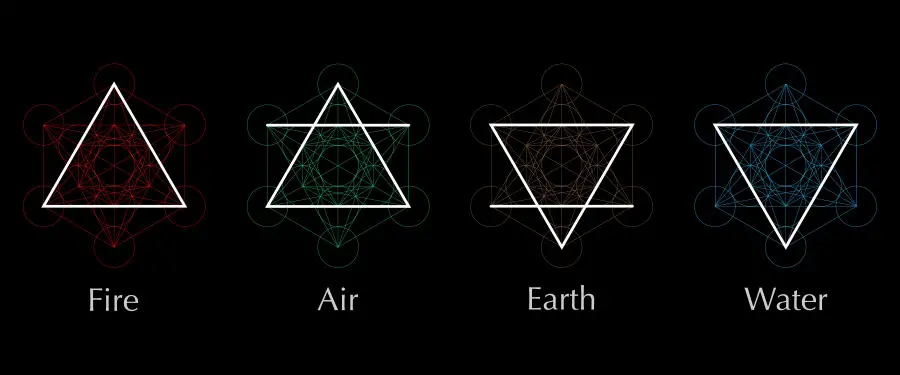In the ancient art and science of alchemy, the Philosopher’s Stone is the magical substance which all alchemists sought. By possessing it, they believed they could transmute base metals such as lead, into gold and silver. With such antiquity, it is interesting to consider where it got its name from. In this article, we are going to look at the question: Why is the Philosopher’s Stone called the Philosopher’s Stone?
The Philosopher’s Stone got its name because the goal of the alchemist’s search was spiritual in nature. By finding a physical substance, they would achieve their goal. A stone is a mass of minerals formed under pressure, and “the Philosopher’s Stone” is an ideal description for the magical element that they sought.

Etymology of the Philosopher’s Stone
Although alchemy can be traced back to ancient Egypt and maybe even beyond, the term Philosopher’s Stone first appeared around 300 AD, in a manuscript by a Zosimos of Panopolis, a Greco-Egyptian alchemist and mystic.
Zosimos of Panopolis
Zosimos of Panopolis was born in what is now known as Akhmim, in the south of Egypt, during the Roman era of Egyptian history. His book Cheirokmeta (Greek for “things made by made”) contains the first known use of the phrase “philosopher’s stone”. A mystic in the Hermetic tradition, Zosimos stated that knowledge of alchemy and metallurgy came from fallen angels.
Translations of Zosimos’ manuscript into Arabic were later discovered. In Arabic the Philosopher’s Stone is known as “Hajar Al-Falāsifa”. Between the 8th and 14th centuries the Arab Empire was the global center for alchemy. This was a time of great interest in classical Greek knowledge, and was known as the Gold Age of Islam. Islamic scholars received tremendous financial support to research alchemy and other intellectual pursuits.
Later, the Arabic alchemical manuscripts were translated into Latin and Greek, and interest in Alchemy flourished in Europe. In Latin, The Philosopher’s Stone is known as “Lapis Philosophorum”. The term philosopher comes from the ancient Greek “philosophos”, which means ‘lover of wisdom’.
In geology, a stone is a naturally occurring solid mass of minerals. They can be formed by cooling lava, when sediments compact under pressure, or when existing stones get transformed through extreme temperature changes or pressure. Because the alchemists were searching for a physical substance, the word “stone” is ideal, and somewhat poetic word for it.
The Four Elements in Alchemy
According to the system of philosophy that the alchemists worked with, all matter exists as different combinations of the four elements of nature – Fire, Water, Air and Earth. The alchemists worked with copper, lead, iron, and tin, and considered each to be simply a different combination of the four elements.
By mastering the ability to change the combination of elements, they would be able to change one kind of metal into another. Efforts to do so included subjecting these metals to various processes, including exposing to sulphur, which they called “the stone that burns”. Other corrosive substances would be used, such as copper and iron sulfates, and sodium and ammonium chlorides.
The use of arsenic was of great interest to the alchemists, in part because of its effect of changing the color of the metals exposed to it. When the color black was produced, the alchemists observed it as showing that the old material had died. They believed that producing the color white was necessary in order to produce silver, and producing the color red was a necessary precursor to being able to produce gold.
Through distillation, they would product nitric acid and sulfuric acid. These processes were highly complex, especially for the time in which the early alchemists worked, and required equipment resistant to corrosion and heat, as well as the ability to dissolve in water. Many of these processes were conducted using a special pear-shaped glass crucible, which they called the “Vase of hermes”.

Prima Materia and Tria Prima
In alchemy there is the concept of Prima Materia, which means “first matter”. It is considered the universal substance, the seed of all matter. From the Prima Materia is derived mercury, sulphur, and salt, which together are the Tria Prima.
The Tria Prima in alchemy is salt, sulphur, and mercury. Salt was considered whatever remains fixed in fire. Sulpur is whatever is flammable. And Mercury is what rises in vapor without being burned.
The Alchemists Search for the Philosopher’s Stone was their Magnum Opus
The Alchemists would conduct their search for the philosopher’s stone is laboratories that were the precursor to modern chemistry labs. Much of the research involved applying heat to various substances. The process of ongoing experiments they conducted, in which they hoped to discover the Philosopher’s Stone and turn base metals into gold was called the “Magnum Opus”, which means the “Great Work”. This phrase has gone on to be used to describe masterpieces in the arts. The alchemists were intensely secretive, often writing their research notes in secret codes.

Why is the Philosopher’s Stone Important?
The Philosopher’s Stone was so important to the alchemists because it was the missing piece of knowledge they needed in order to complete their goals of transmutation. By finding the Philosopher’s Stone they would be able to transmute lead and copper into silver and gold. But importantly to them, it meant they could transmute their soul, and become liberated. This involved the alchemical separation of their spirit from matter, and becoming pure energy.
Is there a Real Philosopher’s Stone?
Officially the Philosopher’s Stone was never found, and alchemy is considered an archaic pseudoscience. However there have been various times in history where it was claimed that alchemists had in fact discovered it. Interest in the search for Philosopher’s Stone continues to exist to this day, with people continuing to practice the ancient art of alchemy, in hopes of discovering the Philosopher’s Stone.
Recommended Reading
If you want to continue exploring this subject more deeply, you can see which books I recommend by clicking here.

